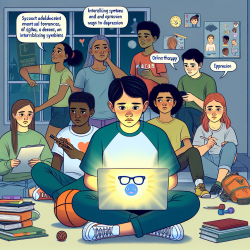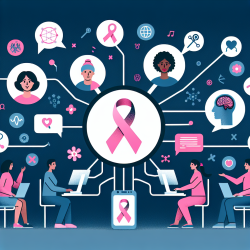Introduction
In the field of speech-language pathology and mental health, understanding the nuances of posttraumatic stress disorder (PTSD) and complex PTSD (CPTSD) in adolescents is crucial for effective intervention. A recent study published in the European Journal of Psychotraumatology sheds light on the social factors that differentiate PTSD from CPTSD in adolescents. This blog will explore the implications of these findings for practitioners and encourage further research into this critical area.
Key Findings from the Study
The study, conducted by Daniunaite et al., involved 1299 adolescents aged 12-16 years and utilized the Child and Adolescent version of the International Trauma Questionnaire (ITQ-CA) to assess PTSD and CPTSD. Contrary to previous assumptions, cumulative trauma exposure did not significantly differentiate between PTSD and CPTSD in the sample. Instead, CPTSD was more closely associated with social factors such as family problems, school issues, and lack of social support.
Social Factors Influencing CPTSD
- Family Problems: Adolescents experiencing financial difficulties, conflicts, or mental illness within the family were more likely to develop CPTSD.
- School Problems: Issues such as bullying and learning difficulties were prevalent among those with CPTSD.
- Social Support: A lack of social support significantly distinguished adolescents with CPTSD from those with PTSD.
Implications for Practitioners
For practitioners, these findings highlight the importance of considering social environments when assessing and treating adolescents with PTSD or CPTSD. Interventions should not only focus on trauma history but also address family dynamics, school environments, and social support networks. By doing so, practitioners can develop more comprehensive treatment plans that cater to the unique needs of each adolescent.
Encouraging Further Research
While this study provides valuable insights, it also underscores the need for further research. Longitudinal studies could offer deeper understanding of how social factors influence the development and maintenance of CPTSD over time. Additionally, exploring interventions that specifically target these social factors could lead to more effective treatment strategies.
Conclusion
The study by Daniunaite et al. is a step forward in understanding the complex interplay between social factors and CPTSD in adolescents. As practitioners, incorporating these findings into practice can enhance the quality of care provided to young individuals affected by trauma. To delve deeper into the original research, please follow this link: PTSD and complex PTSD in adolescence: discriminating factors in a population-based cross-sectional study.










